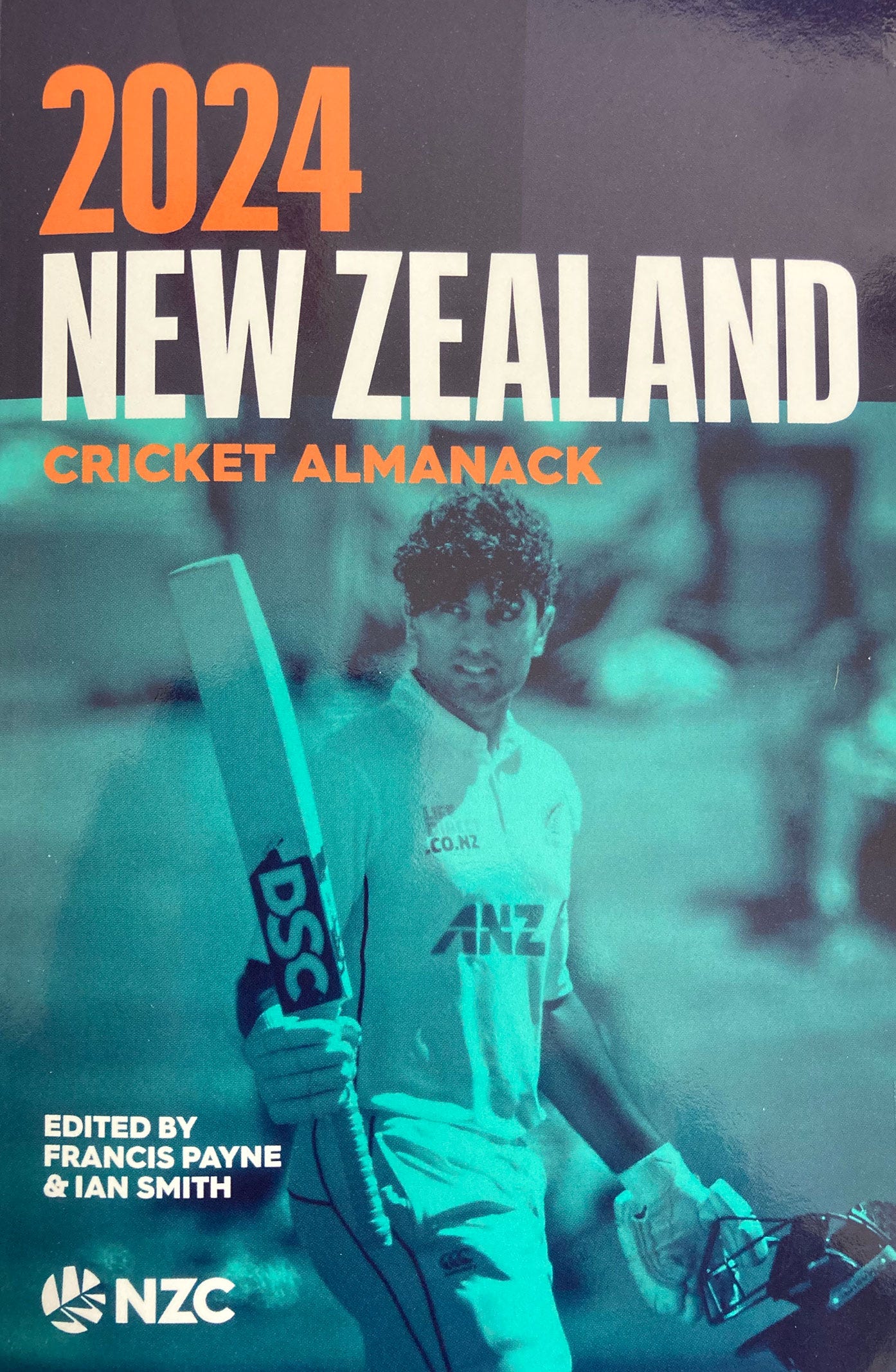Call it fortuitous, call it timely, call it whatever you like, but there was a particular delight in having a review copy of the 2024 New Zealand Cricket Almanack, the grand old bible of the Kiwi game, turn up on the doorstep only hours after another cricket world title came south.
It really was an extraordinary weekend of sporting achievement. Cricket was to the fore with a well-crafted and deserved win over India in a Test match by the men and the superb effort by the White Ferns to knock over South Africa to claim the World T20 title in Dubai.
That proved a cricketing way to celebrate the retention of the America's Cup by Team New Zealand and the Constellation Cup win by the Silver Ferns over Australia in the netball. And that's not to forget Hayden Wilde's win in the World Triathlon Championship series in Torremolinos
.
If any World Cup success by a New Zealand team is rare, the same cannot be said for the Cricket Almanack.
It does a faithful job of recording every aspect of 12 months in the game, and its latest 77th edition is no different to its predecessors.
Editors Francis Payne and Ian Smith continue to achieve a statistical consistency that could only be dreamed of by the players whose deeds they recall. At the same time, they provide background to the performances of the national sides across the three forms of the international game and their equivalent domestic competitions.
The pressure on players to perform across the different formats has never been higher. It seems so long ago that New Zealand's representative cricket season was confined to a series of games between the four Major associations and, perhaps, some games against touring sides relaxing after a visit to Australia.
Within 50 years, the game has turned around, and keeping up with where players are performing is an exercise. Fortunately, the Payne-Smith collaborative is up with the play and able to put everything into suitable perspective.
Because of the playing burden, 37 players appeared for the country in 53 games, in one form or another.
It's a sign of the times that only six of them were Test matches. For all that has occurred in the game internationally, this is a sad statistic from a purist's point of view. It is equally as sad that what should have been a meritorious achievement in beating South Africa in a Test series for the first time was diminished by a below-strength team whose better players were involved in domestic cricket in their country—a lamentable excuse.
Perhaps it was no surprise that, with the reduced diet of Test play, New Zealand could pass 200 runs only once in four innings in their two Tests with Australia.
Competitiveness in the reduced forms of the game produced split results 10-9 in ODIs and 13-12 in T20s.
Yet, the batting performances of Kane Williamson and Rachin Ravindra were enough to see them named Players of the Year.
Williamson's claim to being New Zealand's greatest batsman is beyond denial. Confined by injury to four games as New Zealand once again reached the semi-finals of a World Cup, he still managed to average 56.
He then scored the only century of the series against Bangladesh, while his four innings against South Africa netted 403 runs. Having played 100 Tests, he has scored 32 centuries, having reached 50 on 66 outings. It is a sign of the changed times mentioned earlier that in achieving a Test century in appearances, he has played only 25 first-class games for his province.
Williamson's lack of appearances for Northern Districts puts him fifth on the list of most first-class centuries by New Zealanders. That is headed by Glenn Turner, 103 centuries (with seven in Tests), Martin Crowe, 71 (17), John Wright, 59 (12) and Bert Sutcliffe, 44 (5).
As the editors point out in their informative Happenings section, Williamson is second only to Don Bradman with his average of 81.86 runs scored in 43 Test victories. Bradman's 130.08 average is unlikely to be headed among those who have played in at least 15 wins. But he sits ahead of Inzamam-ul-Haq, 78.16 in 49 wins and Garry Sobers, 77.42 in 31 wins—good company. The next highest Kiwi is Ross Taylor, with 55.45 from 44 wins.
With Williamson's career heading towards its latter stages, his fellow player of the year, Rachin Ravindra, represents a link to the future after a stellar year, especially at the World Cup level. With hundreds against England, Australia and Pakistan, he totalled 578 runs, equal to Williamson's record.
He then came home and scored his maiden Test century against South Africa, scoring 240.
Among those players chosen as Promising Players, Will O'Rourke has stormed into sight and was a pivotal contributor to the weekend win over India. But that came on the back of nine wickets on his debut against South Africa. The two others were Canterbury batsman Zak Foulkes and Wellington batsman Gareth Severin.
Again, another outstanding performer from the weekend, White Fern Amelia Kerr, was named women's player of the year, a result of her continued captaincy success to match both her batting and bowling prowess that saw her total 541 at 67.0 in ODIs, including two centuries.
Otago's Emma Black was named the promising player of the year with her table-topping bowling in both one-day and T20 domestic competitions.
Satisfaction with the summary of another season of cricket is assured for any fan of the game in this compilation of all the facts and nuances of the New Zealand game.



